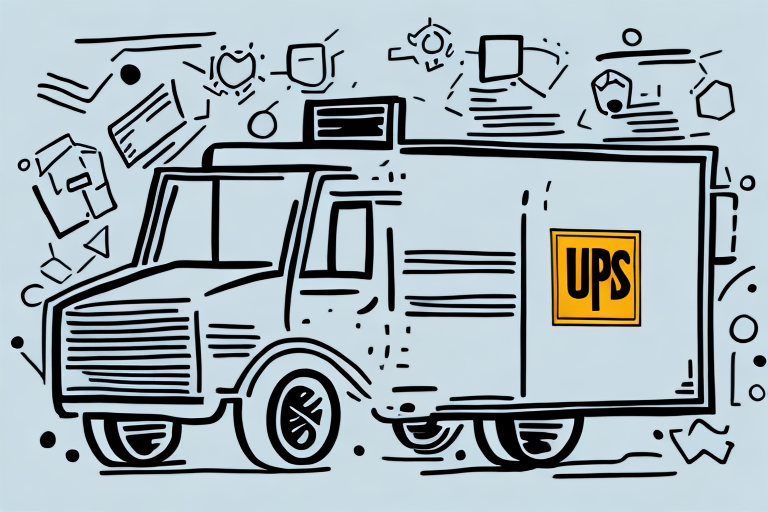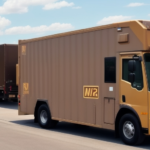How to Calculate Shipping Rates with UPS
Whether you're shipping goods for your business or personal use, it's crucial to understand how to calculate shipping rates with UPS to avoid overspending. UPS employs a detailed rate structure that considers factors such as package weight, dimensions, destination, shipping speed, and additional services. In this comprehensive guide, we'll walk you through everything you need to know about UPS shipping rates, from calculation methods to money-saving tips.
Understanding the UPS Shipping Rate Structure
Before diving into how to calculate shipping rates with UPS, it's essential to grasp their rate structure. UPS uses a combination of weight, dimensions, destination, and shipping speed to determine shipping costs. They offer various shipping services with different price points, allowing you to choose based on your specific needs. Some of the available services include UPS Ground, UPS Next Day Air, and UPS 2nd Day Air.
Factors That Affect Your Shipping Rate with UPS
Several factors influence your shipping rate with UPS. The most significant among these are package weight, dimensions, and destination. Heavier and larger packages generally incur higher shipping costs compared to smaller, lighter ones. Additionally, shipping over longer distances typically costs more than local shipments.
Another critical factor is the type of service you choose. For urgent deliveries, opting for UPS's expedited shipping services, such as Next Day Air, will cost more than standard services like UPS Ground. Moreover, additional services such as signature confirmation or insurance will increase your shipping rate.
It's also important to note that UPS may apply extra fees for specific types of packages, such as hazardous materials or oversized items. These fees vary based on the package and destination, so it's advisable to check with UPS before shipping to be aware of any additional costs.
How to Use the UPS Shipping Calculator
One of the most straightforward ways to calculate your UPS shipping rate is by using their online shipping calculator. This tool allows you to input details about your package's weight, dimensions, and destination, as well as any additional services you require. After entering this information, the calculator provides a shipping cost estimate.
It's important to recognize that the UPS shipping calculator offers only an estimate, and the actual cost may vary due to factors like fuel surcharges and special handling fees. Additionally, the calculator does not account for any discounts or promotions that may be available to you.
If you're shipping internationally, the UPS shipping calculator can also help determine any customs fees or taxes that may apply to your package. This feature is particularly useful in preventing unexpected charges and delivery delays.
For the most accurate rates, consider reviewing the latest UPS rate changes documented in their annual Rate Changes Report.
Tips for Saving Money on UPS Shipping Rates
There are several strategies to save money on UPS shipping rates. One of the most effective is to pack your packages efficiently to minimize weight and dimensions. Additionally, selecting a slower shipping speed can often result in lower costs. Bundling multiple packages together is another way to reduce shipping expenses.
- Efficient Packaging: Use appropriately sized boxes and cushioning materials to reduce weight and dimensional pricing.
- Shipping Speed: Opt for standard shipping services when speed is not critical to save on costs.
- Consolidate Shipments: Combine multiple shipments into a single package when possible.
Another way to save on UPS shipping rates is by leveraging discounts and promotions. UPS provides discounts for businesses, non-profit organizations, and frequent shippers. Additionally, you can look for promotional codes or special offers on the UPS website or via their email newsletters.
Accurate measurement and weighing of your package before shipping are crucial. Incorrect dimensions or weight can lead to additional fees or surcharges. Use a reliable scale and measuring tape to ensure your package meets UPS's requirements.
Using UPS Shipping Zones to Your Advantage
UPS divides the country into shipping zones, each representing a specific geographic area. Understanding the zone your package falls into can help you estimate your shipping costs more accurately. Shipping to locations closer to your origin point often results in lower costs.
Keep in mind that UPS updates their shipping zones annually, so it’s essential to check for any changes before estimating your shipping costs. The current shipping zone map is available on the UPS website.
Additionally, strategically choosing your shipping origin can lead to cost savings. If you operate from multiple locations, consider shipping from the location closest to your most frequent destinations to reduce shipping costs and delivery times.
Understanding the Different UPS Shipping Services Available
UPS provides a range of shipping services, each with unique features and costs. Some of the most popular include:
- UPS Ground: A cost-effective option for shipping packages within the US.
- UPS 2nd Day Air: Guarantees delivery within two business days to most US locations.
- UPS Next Day Air: Ensures next-day delivery for urgent shipments.
- UPS Worldwide Express: Provides fast and reliable delivery to over 220 countries and territories.
Additionally, UPS offers extra services such as package tracking and insurance for added security, as well as a variety of packaging options including boxes, envelopes, and tubes to ensure safe and secure delivery.
How to Choose the Right Packaging for Your Shipment
Selecting the right packaging is essential for minimizing costs and ensuring the safety of your shipment. Use an appropriately sized box for your package and include necessary padding or cushioning. Oversized boxes can lead to unnecessary weight and dimension charges.
Consider the type of product you're shipping. Fragile items may require extra padding to prevent damage, while perishable items might need insulated packaging to maintain appropriate temperatures during transit.
Environmental impact is also important. Choosing eco-friendly packaging materials, such as recycled cardboard or biodegradable packing peanuts, can reduce your carbon footprint and appeal to environmentally conscious customers.
How to Print Labels and Schedule Pickups with UPS Online Tools
UPS offers several online tools to streamline the shipping process. One of the most useful is the ability to print shipping labels and schedule pickups directly from their website. This feature eliminates the need to visit a UPS location, saving you time and effort.
Besides printing labels and scheduling pickups, UPS's online tools allow you to track your package in real-time. You can monitor the progress of your shipment from departure to delivery and receive notifications via email or text message regarding any status changes. This feature is particularly beneficial for businesses managing multiple shipments simultaneously.
Tracking Your Shipment with UPS: Step-by-Step Guide
After shipping your package with UPS, tracking its progress is crucial to ensure timely delivery. UPS offers various tracking tools that make this process straightforward, including:
- Visit the UPS Tracking page on their website.
- Enter your tracking number into the tracking tool.
- Review real-time tracking information, including delivery dates and status updates.
- Use the UPS mobile app for on-the-go tracking and additional features like scheduling deliveries or redirecting packages.
The UPS mobile app provides the same real-time tracking information as the website, with added convenience. It allows you to monitor your package from your smartphone or tablet, schedule deliveries, redirect packages, or authorize drivers to leave packages at specific locations.
Common Mistakes to Avoid When Calculating Shipping Rates with UPS
When calculating shipping rates with UPS, avoiding common mistakes can save you time and money. Some frequent errors include:
- Inaccurate Measurements: Using incorrect package dimensions or weight can lead to unexpected fees.
- Ignoring Additional Services: Failing to account for extras like insurance or signature confirmation may result in higher costs.
- Improper Estimation of Shipping Times: Not accurately estimating delivery times can affect customer satisfaction.
- Neglecting Discounts: Not leveraging available discounts can lead to higher shipping expenses.
- Poor Packaging: Inadequately packaging items may cause damage during transit, incurring additional costs.
Ensuring accurate package measurements, considering all necessary services, and taking advantage of discounts are crucial steps in accurately calculating UPS shipping rates.
Comparing UPS Rates with Other Carriers
To ensure you are getting the best deal, comparing UPS rates with those of other carriers is essential. Popular alternatives include FedEx and USPS, each offering unique shipping services and rate structures. By comparing rates across multiple carriers, you can secure the most cost-effective option for your shipments.
When comparing carriers, consider factors such as delivery speed, reliability, customer service, and overall cost. For instance, FedEx offers same-day and overnight delivery options that might be more suitable for urgent shipments, while USPS may provide competitive rates for certain package sizes and destinations.
Customer service is another critical consideration. While UPS is known for reliable and efficient service, other carriers might offer more personalized support or better resolution for shipping-related issues. Weigh these aspects alongside shipping costs to select the best carrier for your business needs.
In conclusion, calculating shipping rates with UPS requires a comprehensive understanding of their rate structures and various shipping services. By following the tips outlined in this guide, you can reduce your shipping costs and ensure your packages arrive safely and on time.






















